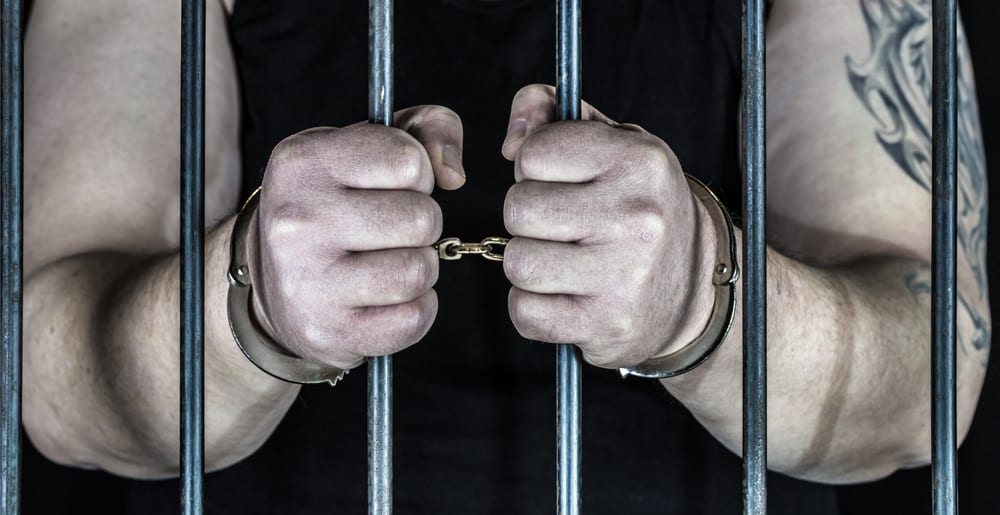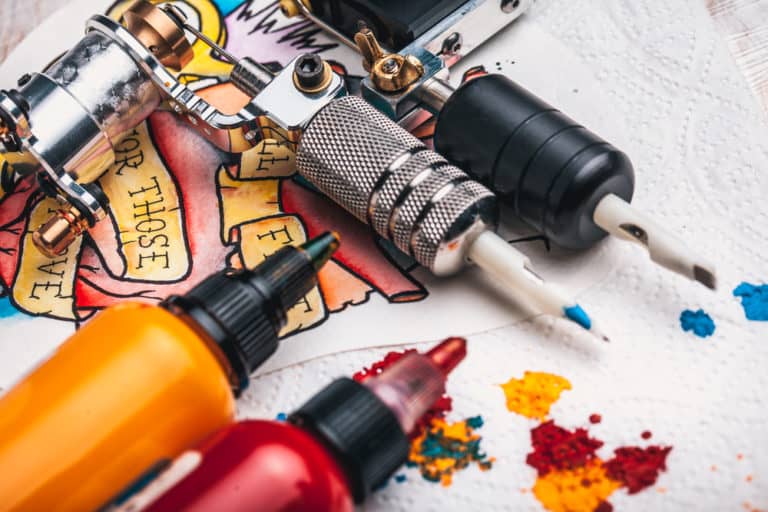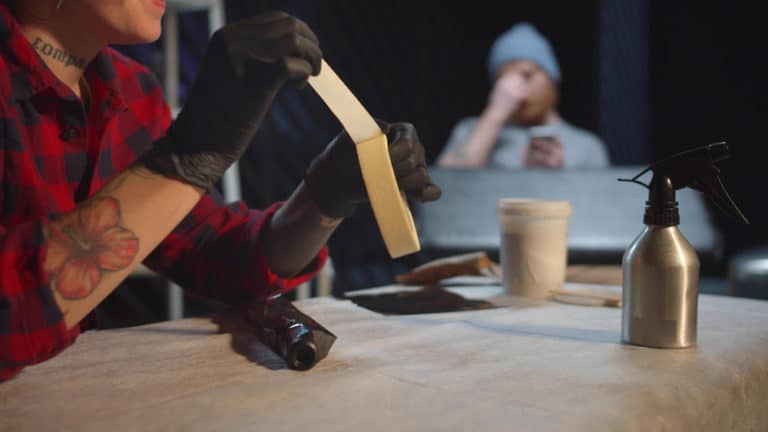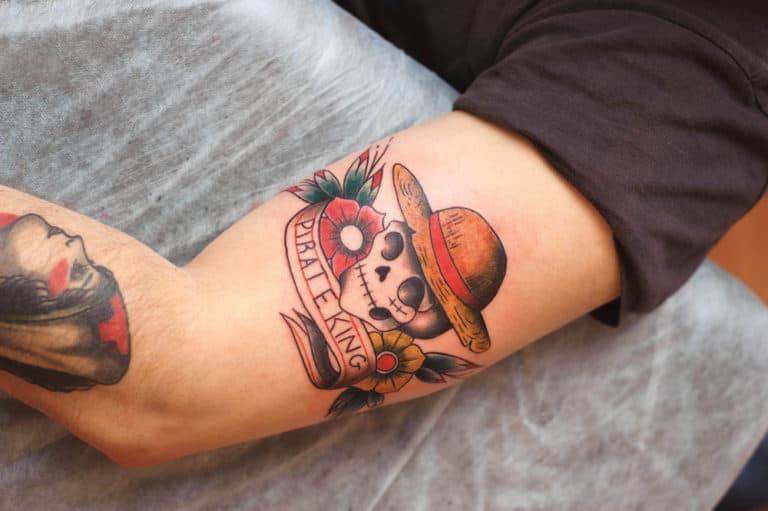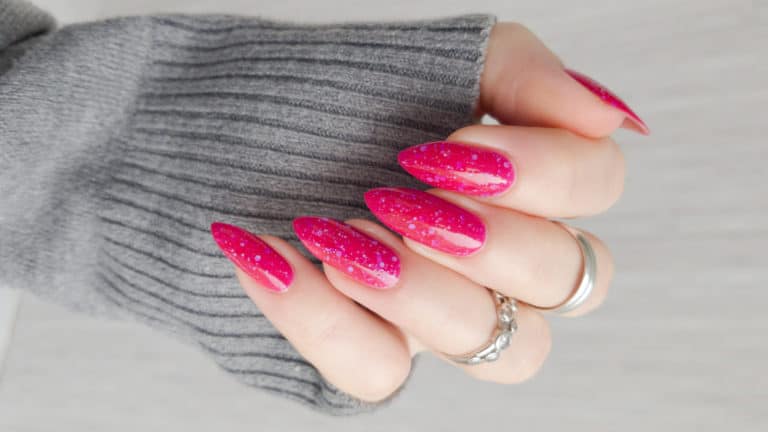How Does Prison Tattooing Work?
Tattoos were first introduced into the world prison systems early in the nineteenth century. The Russian government began tattooing the word ‘KAT’ onto the prisoners’ faces. The tattoos were intended to shame the prisoners and make them societal outcasts. It had quite the opposite effect, as many prisoners had been given unreasonable sentences for something as minor as stealing bread. The prisoners became proud of their tattoos and started inking themselves. Prison tattooing only spread to American prisons around the 1930s. Prison tattooing has become an elaborate symbolic language, but how does it work?
Tattooing in prison is usually illegal. Inmates use guitar strings, pens, sewing needles, electric toothbrush motors, and the springs from pens as tattooing equipment. Ink is made from melted plastic or styrofoam, soot, paint, or pens. The tattoos have a complex meaning which can vary.
The world of prison tattoos is interesting but is also a violent, dangerous culture. You may get killed for having the wrong tattoo.
Is Prison Tattooing Legal?
Tattooing is illegal in USA prisons. This is the same in almost all countries in the world. Tattooing is regarded as self-harming and is usually punished harshly.
The person who received the tattoo can spend weeks or months in solitary confinement. The tattoo artist can have his sentence extended or be placed in solitary confinement if caught.
Although the Russian government first instituted prisoner tattooing, it is also now illegal in Russian prisons.
In 2005, a Bath prison in Ontario established a tattoo parlor. The prison authorities felt that it would lessen the harm caused by tattoos.
Canada has looked into instituting similar establishments or allowing the use of safe equipment and ink in their prisons.
What Equipment Is Used In Prison Tattooing?
As prison tattooing is generally illegal, prisoners are not allowed to have proper tattooing equipment. They make their own from various cobbled-together parts harvested from unlikely sources.
In earlier years, needles were made from any sharp instrument, and the ‘ink’ was introduced to the skin by simply tearing it with the needle. In more recent years, prisoners have developed more elaborate tattoo equipment.
Prisoners in modern times have access to electric toothbrushes, CD players, and beard trimmers. These contain tiny motors that can be adapted to create a motor that powers the needle for tattooing.
Tattoo needles are still made from some surprising sources. Guitar strings are held over a flame until they split. The two halves have a sharp edge that can be used as needles. Paper clips, sewing needles, springs from click-pens, and even razors may be used to make needles.
The tattooing contraption may be held together by rubber bands, tape, or bits of string. One prison inmate said he used to make tattoo machines which he sold for five times the daily wage he could earn for any other prison job. He managed to scavenge enough material to produce three machines a week.
What is Used For Ink In Prison Tattoos?
The ink used in prison tattoos is enough to make any health-conscious person extremely anxious. Most people know the risks of introducing foreign substances into their bodies, but prisoners seem to think the reward is worth the danger.
One of the more unbelievable methods of making ink is scraping down boot or shoe heels. The scrapings are then melted and mixed with urine or other dubious substances to create ink.
Styrofoam is also melted and used similarly.
Soot from burning paper, plastic razors, or cigarette ash is collected and mixed with various liquids. The ink from pens or paint stolen from the prison maintenance stores may also be used.
Occasionally family members smuggle in Indian ink that prison tattoo artists use. Colored ink is highly prized as prison tattoos are usually limited to black or blue. Due to the ink shortage, prison tattoos are restricted to outlined drawings without filling in or shading.
Why Are Prison Tattoos Dangerous?
Prison tattoos pose a serious health risk to prisoners. Using inks such as shavings from heels inevitably contains plastic or rubber. Both these substances are carcinogenic. They can cause an intense response from the body’s immune system as it tries to rid itself of the foreign material.
Inks are mixed with urine as a means of trying to make use of its mild antiseptic properties. Urine, however, also contains waste products such as ammonia. Ammonia, even in low concentrations, is highly irritating to the skin. Using a urine mixed ink almost guarantees that the skin will become inflamed and irritated, predisposing it to infections.
Prison tattooing equipment is not easy to acquire, and many prisoners will be tattooed with the same needle. The result is a high infection rate. Prisoners may also be HIV positive, have hepatitis, or various other diseases that can be transmitted via the needle to other prisoners.
Tattoos are illegal in the majority of prisons. When prisoners are first incarcerated, a record of all their current tattoos is made. New tattoos will result in punishment which is commonly solitary confinement for weeks.
Prisoners cannot get treatment or help for infected tattoos. Many avoid the showers for weeks after getting a tattoo in case the guards notice the newly red, inflamed ink.
What Do Prison Tattoos Mean?
Prison tattoos vary in meaning across prisons and countries. They can indicate:
- the crime that the prisoner committed
- the number of years the prisoner has served
- whether they are lifers with no chance of parole
- how many sentences they have received
Other tattoos show the prisoners’ contempt for the police and if they are repentant or not about their crimes. Tattoos in certain areas of the body can indicate if the prisoner is a homosexual and open to sexual favors in prison.
Prison gangs have become more prevalent, and most have tattoos that show gang affiliation. Gang prison tattoos also indicate the prisoner’s social status in the gang. Having the wrong tattoo or gang affiliation can lead to prisoners being killed.
Prison tattoos can also indicate a prisoner’s attachment to family members or a romantic partner. These are similar to the reasons civilians get tattoos.
Many prisoners regret their prison tattoos, while others are defiantly proud of their body markings. Having prison tattoos can make it difficult for ex-convicts to be accepted into society and get jobs once released.
Conclusion
Tattoos are tightly bound to prison life, and most prisoners acquire tattoos. For some, having a tattoo gives them a sense of power to choose when other normal choices are eliminated. Other prisoners see tattoos as a form of authority defiance. Whatever the reason, prison tattooing continues despite the dangers involved.
Some of my favorite designs, tattoo books, and aftercare products, selected for you
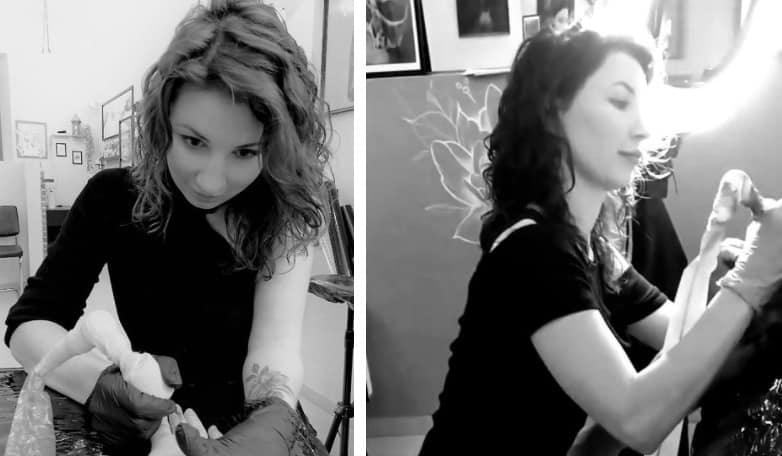
Thank you for reading my article, I hope that you have found it helpful. If you would have trouble finding ideas for your tattoo, wonder what is meaning of design that you have found or what to buy for aftercare, to make sure that your tattoo will be healing quickly and easily, here are some of my favorite products in one place, hope that this will also help.
Design and tattoo ideas
For some ideas you can have a look at those 3 books with hundreds of designs that I use with my clients, they are available on Amazon for Kindle or in classic, paper version (links below):
- Great Book of Tattoo Designs, Revised Edition: More than 500 Body Art Designs (Fox Chapel Publishing) Fantasy, Celtic, Floral, Wildlife, and Symbol Designs for the Skin by Lora Irish
- The Big Book of Small Tattoos – Vol.1: 400 small original tattoos for women and men by Roberto Gemori
- Tiny Tattoos: Over 1,000 Small Inspirational Artworks by Rebecca Vincent.
Tattoo meaning
If you would like to read more about the meaning of different tattoo styles and designs before you will decide what you would like to have, I can recommend a book that was really useful for me when I was starting my tattoo adventure – it’s “Conscious Ink: The Hidden Meaning of Tattoos” by Lisa Barretta (through the link you can find it on Amazon for around $10).
Tattoo aftercare
The skin at the tattoo site often dries out. To prevent it and speed up healing for my clients, I usually recommend one of those tattoo aftercare balms (you can find them on Amazon):
References
- https://metro.co.uk/2017/05/06/getting-a-tattoo-in-prison-is-a-really-bad-idea-here-are-a-few-things-you-might-not-know-6611311/
- https://www.corrections1.com/prison-gangs/articles/15-prison-tattoos-and-their-meanings-pzgKItC7WYoa1wvk/
- https://www.vice.com/en/article/kzzgxm/prisoners-describe-what-its-like-to-get-a-tattoo-behind-bars
- https://www.themarshallproject.org/2019/06/07/the-underground-art-of-prison-tattoos

